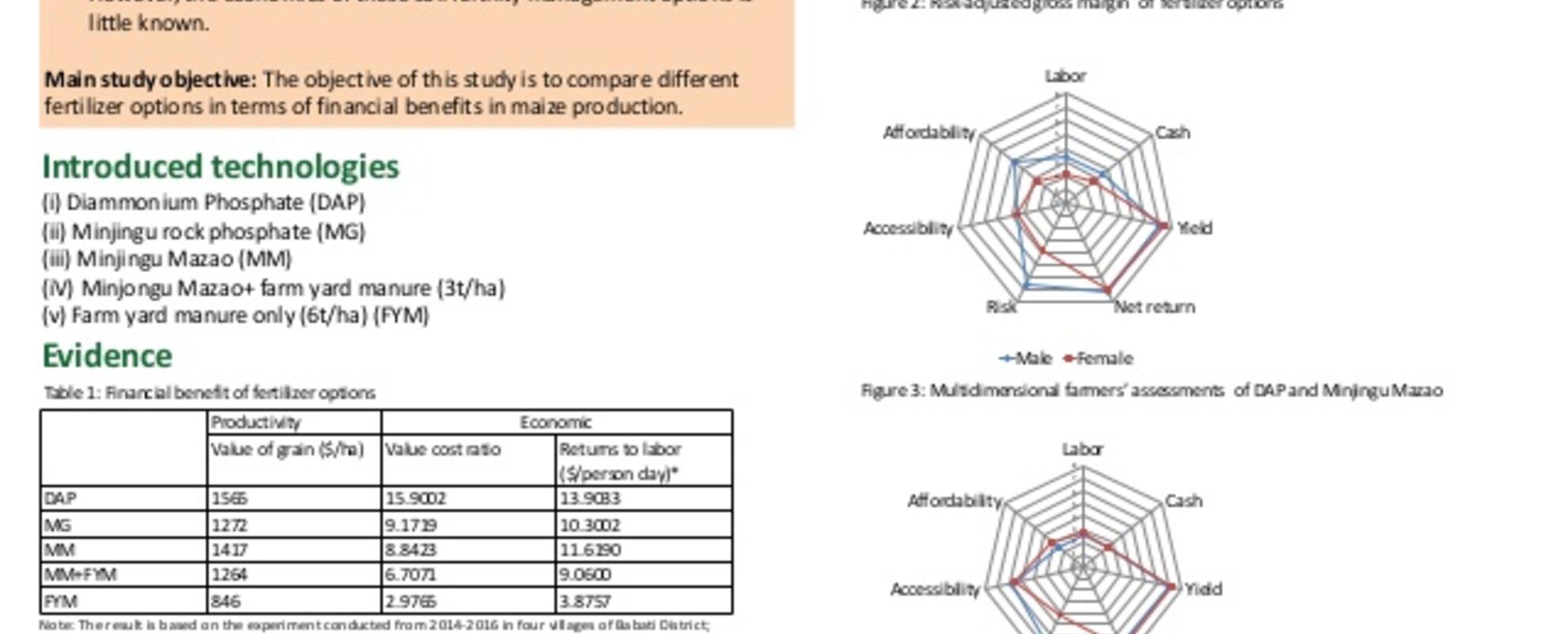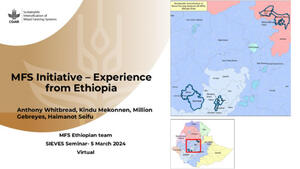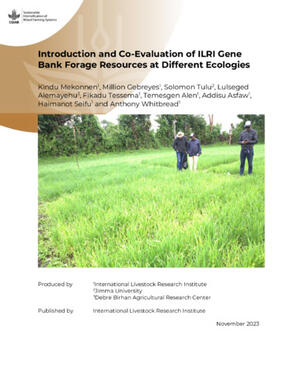
Economic analysis of fertilizer options for maize production in Tanzania
The minimal use of inorganic fertilizer in Tanzania has hampered agricultural productivity growth among smallholder farmers. This is partly because of the negative attitude of farmers towards inorganic fertilizers. Soil fertility management options (including inorganic fertilizers) have been tested by the Africa RISING team in Tanzania’s Babati District and the results show that most of the new options are better than the farmers’ traditional practice in terms of grain yield.
But the economics of these soil fertility management options is little known. This poster presents findings from study that assessed the economic feasibility of different fertilizer options namely: 1) Diammonium Phosphate (DAP); 2) Minjingu rock phosphate (MG); 3) Minjingu Mazao (MM); 4) Minjongu Mazao+farmyard manure (3t/ha); 5) Farmyard manure only (6t/ha) (FYM); 6) Farmers practice (no fertilizer).
Results showed that all of the new soil fertility management options would result in significantly higher financial benefit than the farmers’ practice for all the economic parameters we considered (gross margin, returns to labour, and value cost ratio). DAP is the best performing fertilizer option in terms of risk adjusted gross margin followed by MM, MG, and MM+FYM.
However, the sole FYM option is not better than the farmers’ practice. Farmers assessments also show that DAP and MM (which were selectively put under farmers’ assessments) are superior to farmers’ practices in terms of yield, gross margin and risk.
This poster was presented at the Africa RISING ESA project review and planning meeting in Lilongwe, Malawi, on 3–5 October 2018.

















